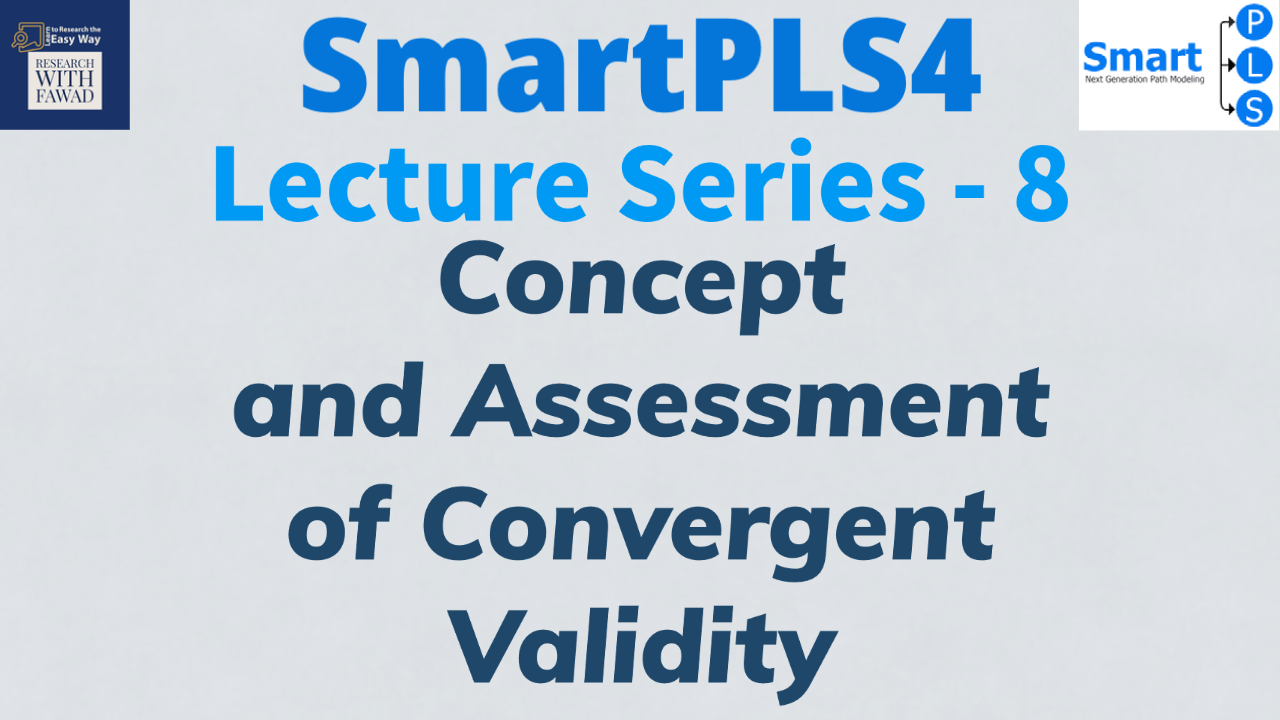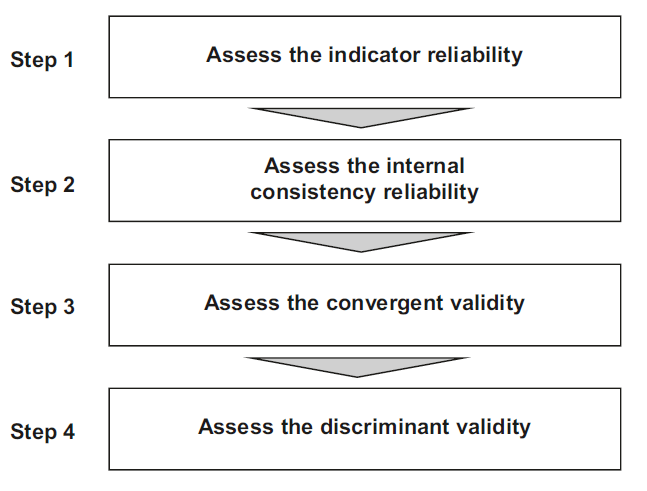How to Assess Convergent Validity?
Learn the concept and process of establishing convergent validity using SmartPLS4

How to Assess Convergent Validity?
For Complete Step by Step SmartPLS4 Tutorial Playlist, Click Here
Understanding Convergent Validity.
This session discusses in detail the concept and assessment of Convergent Validity using SmartPLS 4. The statistic is assessed as part of the measurement model.
Most often, the constructs are reflective at lower level. Hence, all the lower order constructs in the study are assessed for reliability and validity. The following figure highlights the steps in measurement model assessment.In the last session we discussed how to assess Step 1 and Step 2. In this tutorial, the focus is on convergent validity (Step 3).

What is Convergent Validity?
In the preceding session, the focus was on comprehending the construct validity, delineating its concept and within this construct validity, a pivotal aspect emerged that is convergent validity. To ascertain convergent validity through Smart PLS4, a specific statistical measure comes into play, namely, the Average Variance Extracted (AVE). This discourse delves into the methodology of establishing convergent validity using Smart PLS4, along with guidance on addressing potential issues that may arise during the process.
AVE Value less than 0.50!
Reference
License (http://creativecommons.org/licenses/by/4.0/)
Video: How to Establish Convergent Validity?
Additional SmartPLS 4 Tutorials
- A Basic and Simple Model in SmartPLS4
- Basic SEM Concepts – Convergent and Discriminant Validity
- Basic Structural Equation Modelling (SEM) Concepts
- Categorical Moderation Analysis using SEMinR
- How to Assess Construct Reliability?
- How to Assess Discriminant Validity (Construct validity)
- How to Assess Reflective-Reflective Higher Order Construct
- How to Design a Measurement Model?
- How to Enter Data in SPSS or Excel
- How to Solve Discriminant Validity Issues
- How to Use Necessary Condition Analysis in SmartPLS4?
- Reflective-Formative Higher-Order Model using SmartPLS4
- Simple Structural Model in SmartPLS4
- SmartPLS4 Tutorials Series Introduction
- Steps in Data Analysis
- What is a Formative Construct?